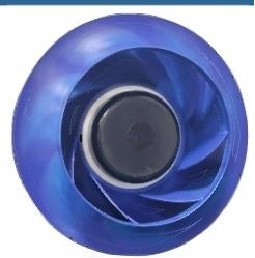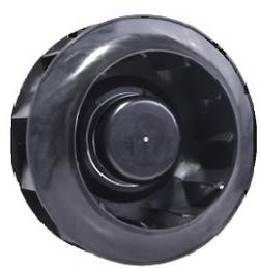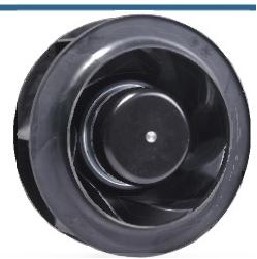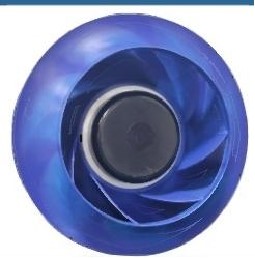FFU Air Filtration Technology for Advanced Cleanrooms: A Technical Whitepaper for Semiconductor, Biopharma, and High-Precision Manufacturing

1. Cleanroom Ventilation Requirements for High-Precision Manufacturing
Cleanrooms operate under strict environmental controls, requiring stable airflow, uniform laminar velocity, precise temperature and humidity regulation, and ultra-low particle concentration. Airborne contaminants—microscopic particles, fibers, spores, chemical residues—can affect yield rates across multiple sectors:
-
Semiconductor wafer fabrication
-
Photonics & optical manufacturing
-
Aerospace electronics
-
Biopharmaceutical production
-
Medical research & gene therapy
-
Food, pharma, and high-precision assembly
In ISO 1–5 cleanrooms, even nanometer-scale particles can cause device failure, process instability, or biological contamination. FFUs deliver uniform laminar flow at 0.45 m/s ± 20%, ensuring consistent air renewal and contaminant removal across the controlled environment.
2. What Is an FFU (Fan Filter Unit)?
An FFU is a self-powered, ceiling-mounted filtration module integrating:
-
A high-efficiency fan
-
Pre-filter and HEPA/ULPA filter stages
-
Flow-straightening diffusers
-
An aerodynamic housing
-
Speed control and monitoring electronics
The fan draws ambient air into the unit, pushes it through multi-stage filtration media, and delivers uniform laminar flow downstream.
H3 — Key Structural Components
-
Housing: Galvanized aluminum, stainless steel, or coated steel; optimized for rigidity, corrosion resistance, and cleanroom compatibility.
-
Diffuser Plate: Stabilizes airflow and ensures laminar distribution over the working surface.
-
Fan Assembly: AC, EC, or three-phase motor based on airflow/pressure needs.
-
Controls: AC switchover, multi-speed selection, or digital control (0–10 V / PWM / RS485).
3. Engineering Characteristics of FFUs
3.1 Airflow Optimization
FFUs must maintain high airflow and pressure despite HEPA/ULPA filter resistance. Performance expectations:
| Requirement | Engineering Target |
|---|---|
| Air velocity | 0.45 m/s ± 20% |
| Cleanliness | ISO 1–6 (ISO 14644-1) |
| Filter grade | H13–H14 / U15–U17 (EN 1822) |
| Pressure capability | Up to 250–350 Pa |
| Air change rate | 200–500+ ACH |
The uniformity of airflow impacts particle settlement, yield rates, and process stability.
3.2 Negative-Pressure Containment
FFUs are widely used in biosafety and medical laboratories requiring containment:
-
Pathogens
-
Viral aerosols
-
Biological particles
-
Toxic particulates
Using FFUs, the plenum layer is kept under negative pressure relative to the operational zone, ensuring harmful substances remain isolated and do not leak into adjacent spaces.
3.3 Noise & Vibration Control
Cleanroom equipment must operate continuously, making acoustic management critical.
Engineering targets for European & North American facilities:
-
<48–52 dB(A) at nominal flow
-
<3 mm/s vibration
-
Static & dynamic balancing of fan impeller
-
Low-turbulence diffuser design
These properties are particularly important for semiconductor lithography, metrology, and inspection tools.
4. FFU Advantages in Modern Cleanrooms
4.1 Modular and Scalable Architecture
FFUs support grid-based ceiling integration:
-
2×2 ft and 2×4 ft modules (North America)
-
600×600 mm and 600×1200 mm modules (Europe, Asia)
The modularity enables:
-
Rapid deployment
-
Easy zoning
-
Flexible cleanroom expansion
-
Localized airflow control
-
Easy replacement and maintenance
4.2 Construction & Lifecycle Advantages
Fast Construction
No ducting required → drastically shorter build time.
Reduced Operating Costs
Although FFUs may cost more upfront, the savings appear through:
-
Lower installation cost
-
No duct leakage
-
Lower maintenance frequency
-
Reduced fan energy consumption (especially with EC fans)
Space Efficiency
FFUs require minimal vertical height in the plenum.
Wide Adaptability
Achieves cleanliness classes ISO 1–6, including ultra-clean micro-environments.
5. FFUs in Semiconductor Manufacturing
Semiconductor cleanrooms demand unprecedented airflow stability:
-
ISO 1–4 vertical laminar flow
-
Extreme temperature/humidity precision
-
Particle & molecular contamination control
-
Micro-vibration sensitivity
-
Tool-level airflow zoning
5.1 Vertical Laminar Flow Cycle
FFUs mounted in the technical overhead layer supply filtered laminar air downward:
-
FFU pushes clean air into the production floor
-
Air passes through raised perforated floor
-
Air returns to lower technical plenum
-
Air is cooled/dehumidified by DCC (dry cooling coils)
-
Air recirculates to top plenum for re-filtration
This loop provides:
-
Uniform temperature
-
Stable humidity
-
Minimal turbulence
-
Predictable particle removal
6. FFU Systems in Biopharmaceutical Laboratories
Biological applications require:
-
Containment (negative pressure)
-
HEPA/ULPA filtration
-
Cross-contamination prevention
-
Safe handling of viral or microbial materials
FFUs are integrated into:
-
BSL-2/3 labs
-
Clean benches
-
Pass-through cabinets
-
Mini-environments
-
Gene therapy manufacturing sites
By maintaining pressure differentials between layers (plenum vs. process area), FFUs ensure reliable environmental safety.
7. Technical Summary Table (Engineering Overview)
| Parameter | Typical FFU Specification | Importance |
|---|---|---|
| Cleanliness | ISO 1–6 | Protects semiconductor/biopharma yields |
| Filtration | H13–U17 | Removes >99.995% sub-micron particles |
| Air Velocity | 0.45 m/s ± 20% | Ensures laminar flow |
| Noise | <48–52 dB(A) | Worker comfort, tool stability |
| Power | 60–200 W range | Energy efficiency |
| Control | 0–10 V / PWM / RS485 | Precision airflow |
| Applications | Semi, Bio, Optics | High-value industries |
| Efficiency | High with EC technology | Lower OPEX |
Conclusion
FFUs are a foundational technology in semiconductor, biopharmaceutical, aerospace, and high-precision industries. Their ability to deliver uniform laminar flow, maintain strict cleanliness levels, support negative-pressure safety, reduce energy consumption, and integrate seamlessly with facility controls makes them indispensable for modern cleanroom design.
As Europe and North America push toward higher efficiency, lower emissions, and smarter manufacturing infrastructure, FFU-based ventilation architectures are expected to expand further—driving cleaner, safer, and more stable production environments across next-generation industries.
FAQ
Are FFUs suitable for ISO 1–5 cleanrooms?
Yes. High-performance FFUs with ULPA filters can meet ISO 1–5 requirements.
Can FFUs reduce energy consumption?
Yes. EC-based FFUs significantly reduce operating power and eliminate ducting losses.
Do FFUs support digital control?
Many FFUs integrate with RS485, Modbus, or 0–10 V systems in modern cleanrooms.
Are FFUs used in semiconductor fabs?
Yes. They form the primary laminar flow source in wafer fabrication plants.
CTAs
-
Request Cleanroom FFU Technical Consultancy
-
Download FFU Integration Guidelines (EU/US Compatible)
-
Book Engineering Evaluation for Semiconductor or Biopharma Projects
-
AFL EC External Rotor Fans — Redefining Airflow Engineering for the Smart Manufacturing Era
2025-11-14
-
What Makes EC Fans More Efficient? A Complete Guide to Next-Generation Electronically Commutated Fan Technology
2025-11-14
-
Dual-Inlet EC Centrifugal Fan — High-Volume, Low-Noise, Smart-Control Airflow for Next-Generation Systems
2025-11-14
-
Backward Centrifugal Fan Innovation for Ventilation Systems Efficiency
2025-11-14
-
Longer Service Life: Why DC Axial Fans Win in HVAC Innovation
2025-11-07
-
PC Cooling Innovation: The DC Brushless PWM FG 8015 Fan Advantage
2025-10-31
-
Customer Success Story — High-Efficiency Fan for FFU Cleanroom Applications
2025-10-24
-
The New EU ErP Directive — Redefining Energy Efficiency and Fan Technology for the Future
2025-10-24
-
High-End Equipment Cooling Solutions — AFL Fans Powering the Future of Precision Manufacturing
2025-10-24
-
High-Efficiency EC Fan Solutions for Data Centers — Precision Cooling, Reliability, and Energy Optimization
2025-10-24
-

AFL External Rotor Fans Axial Fans in Fan Solutions for the Renewable Energy Industry
-

DC Backward Centrifugal Fans - AFL Fans Premium Solution for Industrial Ventilation
-

DC Backward Centrifugal Fans φ250 – High-Performance Industrial Fans
-

High-Quality DC Backward Curved Centrifugal Fans φ220 for Industrial Applications | Trusted Supplier in China
-

DC Backward Centrifugal Fans φ225 for Industrial and Commercial Use


